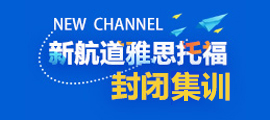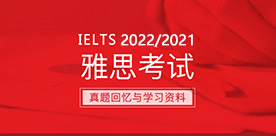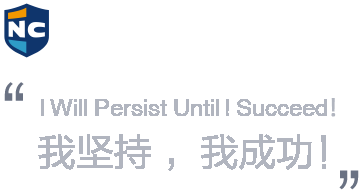2017.10.21雅思考試機經(jīng)回憶
2017/10/24 9:55:49來源:新航道作者:新航道
摘要:上海新航道雅思培訓機構(gòu)小編為大家?guī)淼氖莿傔^去的2017.10.21的雅思考試回憶,還有答案和解析哦!
上海新航道雅思培訓機構(gòu)小編為大家?guī)淼氖莿傔^去的2017.10.21的雅思考試回憶,還有答案和解析哦!
Listening
|
Section 1 |
|||||||||||||||||||||
|
Version |
Topic |
||||||||||||||||||||
|
V15115 |
咨詢游泳館 |
||||||||||||||||||||
|
Questions 1-10 Swimming Pool
Trains for 11-13s 8. 3 times a week 9. starts at 5:30 p.m. 10. transport lost approx. $30 |
|||||||||||||||||||||
|
Section 2 |
|
|
Version |
Topic |
|
V14143 |
介紹咖啡豆的制造過程及不同咖啡豆的味道 |
|
Questions 11-16 Harvesting and processing cocoa beans 11. Chocolate beans are harvested and then bags are shipped.
12. Bags are then opened and weighed by machines.
13. Next chocolate beans are cleaned in a hopper
After being roasted at a high temperature
14. Boiled chocolate beans are expanded and cracked
15. Roasted beans needs to be cooled.
16. The bags of beans are sealed in the pocket.
Questions 17-20 A. intense B. mild C. chocolaty D. light Types of coffee 17. Green Roast B 18. First Crack D 19. French Roast C 20. Double Roast A |
|
|
Section 3 |
|
|
Version |
Topic |
|
V30085 |
學生關(guān)于音樂對人們進食影響的研究 |
|
Questions 21-24 21. What is the research about? A. the effect of music on people B. the effect of music on food C. the effect of music on the price of food
22. In the restaurant A. music is played everywhere B. music is played in uniform level volume C. music is played at a certain time
23. The first question of the questionnaire A. understand people’s taste on music B. clarify the research aim C. disguise the purpose of the survey
24. The language of the questionnaire comes from A. a previous study B. the professional dictionary C. students
Questions 25-26 Which TWO factors are the main reasons for choosing a restaurant? A. Competitor nearby B. Environment C. Transport facilities D. Service E. Seat capacity
Questions 27-30 What are the people’s attitudes towards the following music? A. People spend more money B. People came back again C. people left right after eating D. people did not think it worth the price E. People didn’t notice the music F. People don’t like it at all 27. Jazz:A(jazz會停留久點) 28. No music:D 會覺得價錢貴 29. Classic:C吃完就想走 30. Pop music:B |
|
|
Section 4 |
|
|
Version |
Topic |
|
V11120 |
一個澳大利亞的換胎回收公司介紹 |
|
Questions 31-40 31. The typical tire dealer may generate 600 to 800 waste tires per month 32. There are companies recycling rubber for profit 33. Recycling has no limit on size of tire 34. 5% of the research has been completed 35. wheel hub production of steel: remove wires which can be used in industry 36. gets rid of dirt segments 37. the rubber can be molded with plastic for products 38. rubber-molded products are carpet padding or floor materials 39. It is based on water and therefore environmentally friendly 40. MSDS: is an ink applied to the tread of a tire as a visible color |
|
Reading
|
Passage 1 |
|
|
Topic |
天才學者 |
|
Content Review Thomas Young The Last True Know-It-All A Thomas Young (1773-1829) contributed 63 articles to the Encyclopedia Britannica, including 46 biographical entries (mostly on scientists and classicists) and substantial essays on "Bridge,” "Chromatics," "Egypt," "Languages" and "Tides". Was someone who could write authoritatively about so many subjects a polymath, a genius or a dilettante? In an ambitious new biography, Andrew Robinson argues that Young is a good contender for the epitaph "the last man who knew everything." Young has competition, however: The phrase, which Robinson takes for his title, also serves as the subtitle of two other recent biographies: Leonard Warren's 1998 life of paleontologist Joseph Leidy (1823-1891) and Paula Findlen's 2004 book on Athanasius Kircher (1602-1680), another polymath.
B Young, of course, did more than write encyclopedia entries. He presented his first paper to the Royal Society of London at the age of 20 and was elected a Fellow a week after his 21st birthday. In the paper, Young explained the process of accommodation in the human eye on how the eye focuses properly on objects at varying distances. Young hypothesized that this was achieved by changes in the shape of the lens. Young also theorized that light traveled in waves and he believed that, to account for the ability to see in color, there must be three receptors in the eye corresponding to the three "principal colors" to which the retina could respond: red, green, violet. All these hypothesis were subsequently proved to be correct.
C Later in his life, when he was in his forties, Young was instrumental in cracking the code that unlocked the unknown script on the Rosetta Stone, a tablet that was "found" in Egypt by the Napoleonic army in 1799. The stone contains text in three alphabets: Greek, something unrecognizable and Egyptian hieroglyphs. The unrecognizable script is now known as demotic and, as Young deduced, is related directly to hieroglyphic. His initial work on this appeared in his Britannica entry on Egypt. In another entry, he coined the term Indo-European to describe the family of languages spoken throughout most of Europe and northern India. These are the landmark achievements of a man who was a child prodigy and who, unlike many remarkable children, did not disappear into oblivion as an adult.
D Born in 1773 in Somerset in England, Young lived from an early age with his maternal grandfather, eventually leaving to attend boarding school. He had devoured books from the age of two, and through his own initiative he excelled at Latin, Greek, mathematics and natural philosophy. After leaving school, he was greatly encouraged by his mother's uncle, Richard Brocklesby, a physician and Fellow of the Royal Society. Following Brocklesby's lead, Young decided to pursue a career in medicine. He studied in London, following the medical circuit, and then moved on to more formal education in Edinburgh, Gottingen and Cambridge. After completing his medical training at the University of Cambridge in 1808, Young set up practice as a physician in London. He soon became a Fellow of the Royal College of Physicians and a few years later was appointed physician at St. George's Hospital.
E Young's skill as a physician, however, did not equal his skill as a scholar of natural philosophy or linguistics. Earlier, in 1801, he had been appointed to a professorship of natural philosophy at the Royal Institution, where he delivered as many as 60 lectures in a year. These were published in two volumes in 1807. In 1804 Young had become secretary to the Royal Society, a post he would hold until his death. His opinions were sought on civic and national matters, such as the introduction of gas lighting to London and methods of ship construction. From 1819 he was superintendent of the Nautical Almanac and secretary to the Board of Longitude. From 1824 to 1829 he was physician to and inspector of calculations for the Palladian Insurance Company. Between 1816 and 1825 he contributed his many and various entries to the Encyclopedia Britannica, and throughout his career he authored numerous books, essays and papers.
F Young is a perfect subject for a biography - perfect, but daunting. Few men contributed so much to so many technical fields. Robinson's aim is to introduce non-scientists to Young's work and life. He succeeds, providing clear expositions of the technical material (especially that on optics and Egyptian hieroglyphs). Some readers of this book will, like Robinson, find Young's accomplishments impressive; others will see him as some historians have - as a dilettante. Yet despite the rich material presented in this book, readers will not end up knowing Young personally. We catch glimpses of a playful Young, doodling Greek and Latin phrases in his notes on medical lectures and translating the verses that a young lady had written on the walls of a summerhouse into Greek elegiacs. Young was introduced into elite society, attended the theatre and learned to dance and play the flute. In addition, he was an accomplished horseman. However, his personal life looks pale next to his vibrant career and studies.
G Young married Eliza Maxwell in 1804, and according to Robinson, "their marriage was a happy one and she appreciated his work." Almost all we know about her is that she sustained her husband through some rancorous disputes about optics and that she worried about money when his medical career was slow to take off. Very little evidence survives about the complexities of Young's relationships with his mother and father. Robinson does not credit them, or anyone else, with shaping Young's extraordinary mind. Despite the lack of details concerning Young's relationships, however, anyone interested in what it means to be a genius should read this book.
Questions & Answers Questions 1-7 判斷對錯 1. “The last man who knew everything” has also been claimed to other people.---True 2. All Young’s articles were published in Encyclopedia Britannica.---False 3. Like others, Young wasn't so brilliant when grew up.---False 4. Young's talents as a doctor are surpassing his other skills.---Not Given 5. Young's advice was sought by people responsible for local and national issues.---True 6. Young was interested in various social pastimes.---True 7. Young suffered from a disease in his later years.---Not Given
Questions 8-13 簡答 8. How many life stories did Young write for Encyclopedia Britannica? 46 9. What aspect of scientific research did Young do in his first academic paper? human eye accommodation 10. What name did Young introduce to refer to a group of languages? Indo-European 11. Who inspired Young to start the medical studies? Richard Brocklesby 12. Where did Young get a teaching position? Royal Institution 13 What contribution did Young make to London? gas lighting |
|
|
Passage 2 |
|
|
Topic |
仿生科技 |
|
Content Review Inspired by nature Section A In the dawn, fog passes across sands in the desert,when touching the surface of the beetles, the surface of beetles is bumpy which resembles the roof of a car. Fog becomes rain droplets,so beetles spring their wing to get the droplets, When the droplets on the beetles bumpy surface became too heavy,the droplets will drop on the flat surface between the bumps and then into the channel of surface,the droplets in the bumps channel will finally into beetles mouth.
Section B Andrew Parker found this kind of beetles can solve the water problem in the dry desert,because the methods those beetles use to gather water can be copied by human,so he design some experiments to mimic beetles.
Section C Parker wanted to design the roof of tents in the desert as the surface of Namib beetles,so people can use this collected water for living or developing forest farming,so an institution design advice according Parker 's thought,this device is very efficient in accommodating water in the desert. Section D Parker study the glow of carapace of beetles, finding that a reflector on it ,this reflector can reflect solar power,human can manic this reflector to panels and airplanes.
Section E nature inspiration attracts a lot of research attentions,such as chemists and biologist.
Section F George said there are some advance in technologies when observing nature, nature is the reason why technical advance; for example: FISHBOX and FISHERKING, these two create new cars via researching the shape of creature of the nature.
Section G David Knight had an experiments on spider. He found spider’s venom can fix the wound bitten by spider. So the solution of biting wound is the result of spider.
Section H Andrew Parker said the reason for technical advance is because patents and collaboration. So Andrew draw a blue print about the circulation. Janine Benyus made a bio-mimetic design. This design can have an identical effects with the biological nature.
Questions & Answers Questions 14-17 Which Paragraphs contain the following information. 14. Examples about potential medical benefits from nature. (G) 15. Mention of someone who is on technical drawings by nature. (H) 16. A project having particular value in a region of low rainfall. (C) 17. Some companies would be helped by nature to produce new productions. (F)
Questions 18-22 Complete the summary. (ONLY ONE WORD) Namib Beetles can’t get access to water once 18. sun appears. But they manage to get the water. They take advantage of 19. droplets occurs in the early morning. The water droplets are so tiny that they have to use their 20. (bumpy) surface/wings to accommodate them, then trough the channels of their bumps and wings, the droplets enter into 21. mouth of beetles, which resembles a polished 22. roof in a vehicle.
Questions 23-26 MATCHING List of names A. Andrew Parker B. George C. David Knight D. Janine Benyus 23. Making a bio-mimetic device, which can produce the same effect as the biological nature. (D) 24. Solutions got from nature resources. (C) 25. Technical developments involving nature resource. (B) 26. Small substance means a lot applications. (A) |
|
Writing
|
Task 1 |
|
|
Type of questions |
餅圖 |
|
題目 The chart shows in 2007, how happy the students were with 3 different facilities in a university in UK.
|
|
|
Task 2 |
|
|
Topic |
社會問題 |
|
Type of questions |
討論類 |
|
題目 Some people think young people are not suitable for important positions in the government, while other people think it is a good idea for young people to take on these positions. Discuss both views and give your own opinion. |
|
Speaking
Part 1
|
People & Animal |
|
Friends Pop star Neighbours Teenagers |
|
Events |
|
Birthdays Daily routine History Meal |
|
Objects/Things |
|
Jewellery Boat Bus |
|
Places |
|
Hometown Home/Accommodation High school |
|
Media |
|
Newspaper and magazine Emails and Letters Computer |
|
Abstract |
|
Work or study Sunny days Politeness Names Rainy days |
Part 2&3
|
People & Animal |
|
Describe a thing that a wise person did/ a person who gives a clever solution to a problem.聰明的人 Describe a couple you know who have a happy marriage.幸福的婚姻 Describe someone who is knowledgeable. 知識淵博的人 Describe an interesting person from another country.有趣的外國人 Describe a businessman you admire.敬佩的商人 |
|
Events |
|
Describe a time you moved to a new home or school.搬家、轉(zhuǎn)學 Describe something you want to do for a long time but you haven’t done yet.想做的事 Describe a time you need to arrive early.早到的經(jīng)歷 Describe an English lesson you had.英語課 Describe a time you saw lots of people were smiling.好笑的場合 Describe a sport game you’ve watch.喜歡看的運動 Describe a (long) car journey you went on.汽車旅行 Describe an experience that you taught a friend or a relative.教他人 |
|
Objects/Things |
|
Describe your favourite piece of clothing.喜歡的衣服 Describe a piece of art (like statue, painting).藝術(shù)品 Describe a kind of vegetable or plant.植物 Describe an occasion that you had a special cake.特殊的蛋糕 Describe something you bought recently that you were happy with.開心購物 Describe a piece of furniture.家具 Describe a traditional product in your country.傳統(tǒng)產(chǎn)品 Describe an important letter you received.重要的信 Describe an exciting book you have read.令人興奮的書 |
|
Places |
|
Describe a dream home you would like to have.理想之家 Describe a leisure facility (cinema, theatre, sports center) you would like to have in your hometown.休閑設(shè)施 |
|
Media |
|
Describe a website you like to visit.喜歡訪問的網(wǎng)站 Describe a TV series or drama you enjoy watching.電視節(jié)目 |
|
Abstract |
|
Describe a rule at your school that you agree or disagree.校規(guī) Describe an achievement that you are proud of.驕傲的成就 |
|
重點話題Sample Answer |
|
Describe an exciting book you have read. You should say: When you read it What type of book it is What it is about And explain why it is exciting.
The Moon and Sixpence was just that kind of a book for me. I first read the book when I was studying in London, the hometown of the author. The book is just mind blowing. The book tells the story about an uncompromising and self-destructive man who forsakes wealth and comfort to pursue the life of a painter.
Every page of the book is so gripping and intriguing that once a person starts reading the book it is impossible to leave it and do something else. It is such a page-turner. It teaches a really good lesson on how focused he was on the moon rather than sixpence. Another good lesson it teaches is that no matter where you are or at what age, you can ace it if you believe in yourself. |
免費獲取資料
熱報課程
- 雅思課程
| 班級名稱 | 班號 | 開課時間 | 人數(shù) | 學費 | 報名 |
|---|
免責聲明
1、如轉(zhuǎn)載本網(wǎng)原創(chuàng)文章,情表明出處
2、本網(wǎng)轉(zhuǎn)載媒體稿件旨在傳播更多有益信息,并不代表同意該觀點,本網(wǎng)不承擔稿件侵權(quán)行為的連帶責任;
3、如本網(wǎng)轉(zhuǎn)載稿、資料分享涉及版權(quán)等問題,請作者見稿后速與新航道聯(lián)系(電話:021-64380066),我們會第一時間刪除。
全真模擬測試
雅思動態(tài)

DeepSeekx雅思官方:中國考生...
制作:每每







